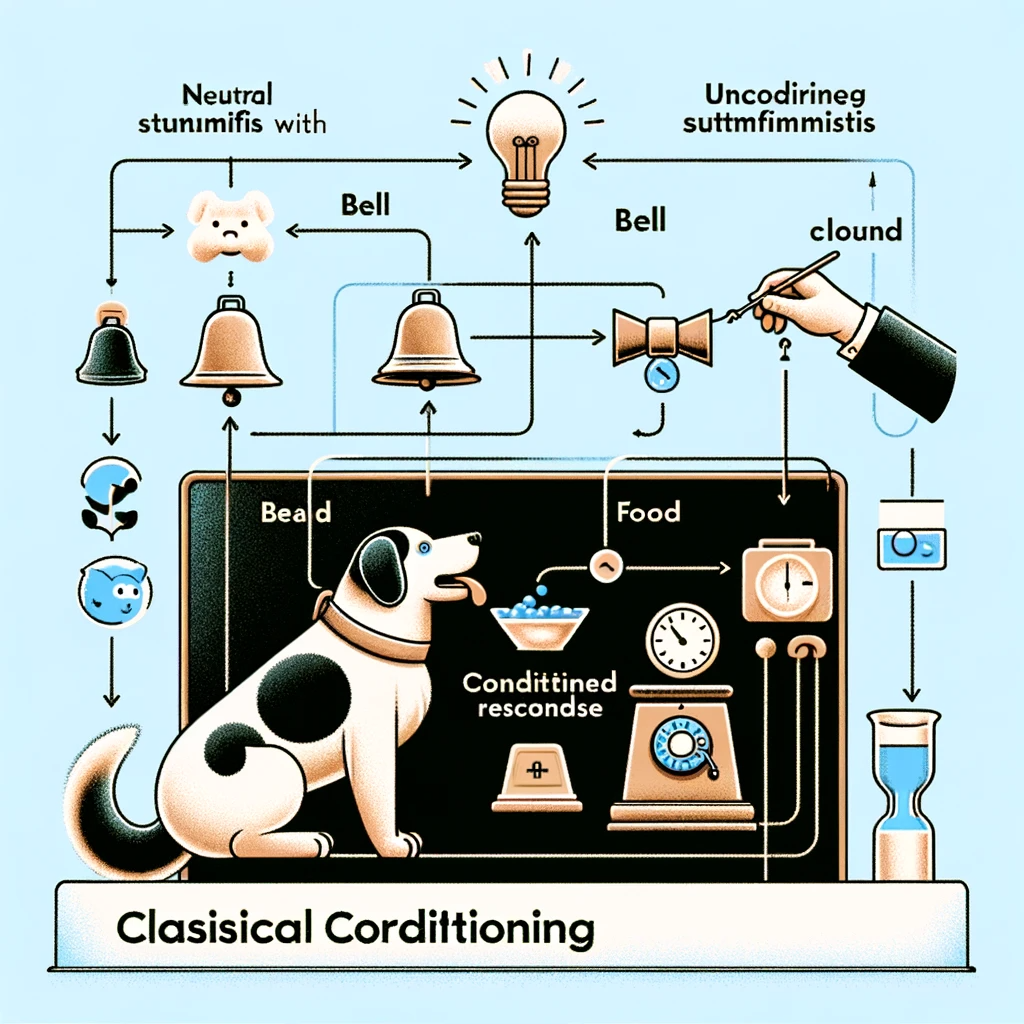Understanding the Basics of Classical Conditioning
Classical conditioning is a fundamental concept in psychology, introduced by Ivan Pavlov in the early 20th century. This learning process involves creating an association between a naturally occurring stimulus and a previously neutral one.
Pavlov’s Experiment
Ivan Pavlov, a Russian physiologist, demonstrated classical conditioning through his famous experiment with dogs. He noticed that dogs would salivate not just when they saw food, but also when they saw the lab assistant who fed them. Pavlov paired the sound of a bell (neutral stimulus) with the presentation of food (unconditioned stimulus). Eventually, the dogs began to salivate (conditioned response) at the sound of the bell alone.
Key Terms in Classical Conditioning
- Unconditioned Stimulus (UCS): Naturally triggers a response (e.g., food causing salivation).
- Unconditioned Response (UCR): Natural reaction to the UCS (e.g., salivation to food).
- Conditioned Stimulus (CS): Originally neutral, becomes associated with the UCS (e.g., bell).
- Conditioned Response (CR): Learned response to the CS (e.g., salivation to bell).
Applications and Examples
- Advertising: Pairing products with stimuli that evoke positive emotions (e.g., a catchy jingle).
- Behavior Therapy: Treating phobias by gradually associating the feared object with a positive stimulus.
- Education: Creating a positive learning environment can condition students to feel more engaged and motivated.
Modern Perspectives
Classical conditioning remains a key concept in understanding human and animal behavior. It has provided a foundation for further studies in behaviorism and learning.
Conclusion
The principle of classical conditioning has far-reaching implications, influencing various fields from marketing to mental health, showcasing the profound impact of learned associations on behavior.




